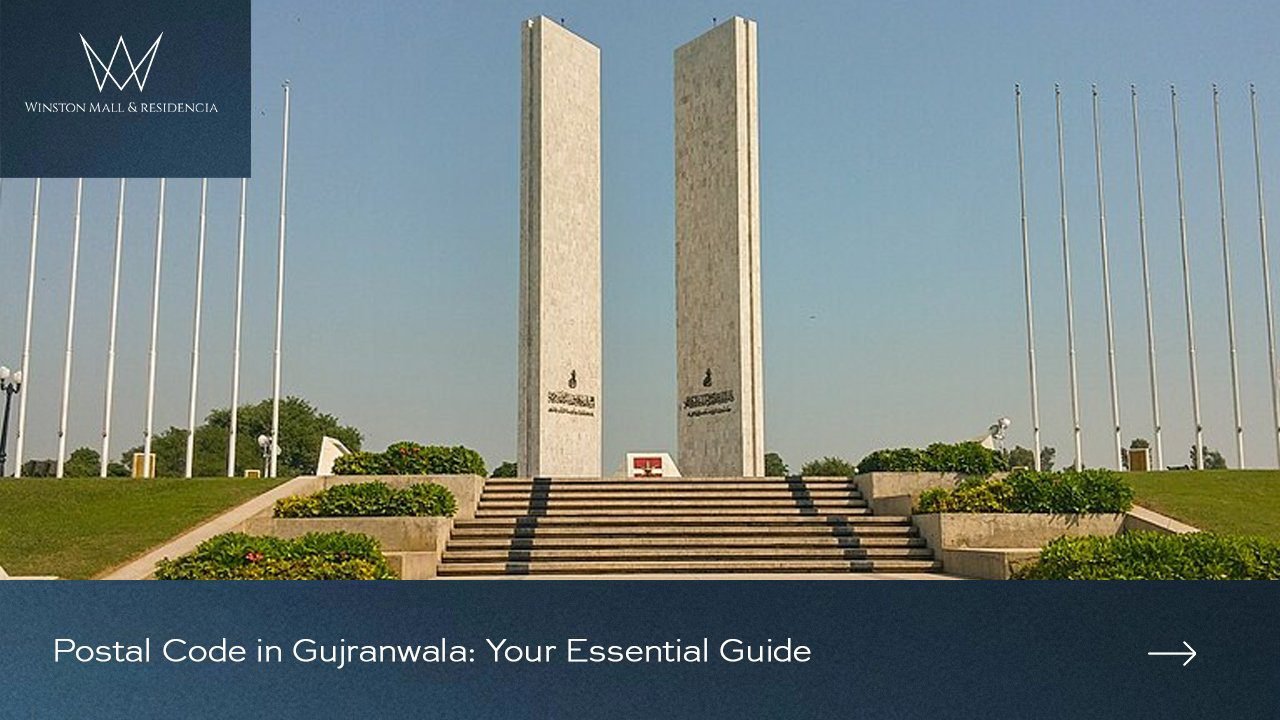The real estate market in Pakistan has been seen tremendous growth and change over the past few years. With property prices fluctuating frequently, many buyers wonder how real estate agents actually go about determining the listed prices for properties. Calculating property value is not simply plucking a number out of thin air – it requires research, analysis, and utilization of various valuation methods. In this blog post, we will explore the different techniques real estate agents in Pakistan use to arrive at pricing for properties. From comparing similar properties that have recently sold, to factoring in location, demand, and growth potential, the process of valuing real estate is nuanced. By gaining insight into these valuation methods, buyers can better understand how agent-listed prices are formulated. With a keen eye and the right information, buyers can feel confident they are getting a fair deal in Pakistan’s dynamic property market. Whether you are looking to buy or sell, understanding how real estate agents calculate property prices is key to making informed decisions in this exciting market.
Table of Contents
ToggleWhat Is The Prime Time to Sell Property?
Determining the ideal time to sell property in Pakistan depends on several factors. Generally, the prime season for real estate sales is in the spring and early summer months. The weather is ideal during this time, with temperatures starting to warm but not yet stiflingly hot. Families with children often target this window to move before the new school year begins.
However, other considerations like religious holidays, harvest season for agricultural land, and timing of local elections or major city projects can all impact the real estate market. Occasionally, economic factors may motivate buyers and sellers to act outside of the typical spring market rush. For example, if mortgage rates are projected to rise soon, there may be a surge of activity as buyers try to lock in lower rates.
Real estate agents keep a close eye on supply and demand in local markets to pinpoint the prime moment to list properties for sale. If new housing inventory is low compared to buyer interest, even the off-season winter months may see brisk sales. Having an experienced agent with their finger on the pulse of the local market is key to seizing the ideal timing for a sale.
What Are The Dynamics Behind Property Pricing?
Several dynamic factors influence how real estate agents arrive at pricing for properties in Pakistan:
Comparable Properties: One of the most important methods agents use is comparing the subject property to recent sales of similar nearby properties. Features like size, age, layout, condition, upgrades, and amenities are all compared. Higher sales prices of comps indicate the subject property can also list for a higher price. Adjustments are made for any differences.
Location: Where the property is located significantly impacts price. A beachfront home commands more than one inland. Proximity to amenities like schools, transit, shopping, and highways also affects values. Desirable neighborhoods boost prices. Agents research carefully to price accordingly.
Demand and Growth Potential: Is the area growing with new construction or investments? Areas seeing revitalization often experience rising property values. Agents look at demographic shifts and projections to factor where future demand will be.
Interest Rates and Financing: Low mortgage rates and creative financing options expand buyers’ budgets. Agents may adjust pricing higher in markets where financing deals allow buyers to qualify for bigger loans. Cash buyers also impact pricing dynamics.
Economic Factors: Employment rates, consumer confidence, inflation/deflation, stock market performance, and more all influence real estate markets. Pricing has to align with what buyers can afford given economic realities.
These factors require constant research and market analysis by agents to stay on top of trends and make accurate pricing assessments.
Is There Any Balance between Supply and Demand?
Imbalances between property supply and buyer demand can significantly skew real estate prices in some areas of Pakistan.
In buyer’s markets where housing inventory outpaces the number of buyers, prices tend to be lower and negotiation favors purchasers. Sellers may have to price homes under market value to attract interest.
Meanwhile, in seller’s markets with low inventory and excessive demand, bidding wars erupt over limited properties. Sellers can often maximize prices above perceived market value. Multiple offers and buyers dangling incentives like waived contingencies or extra earnest money add fuel to pricing fever.
Astute agents track inventories of available homes versus registered buyers actively searching. They monitor median days a listing remains on the market before going under contract. Active listing to sold price ratios reveal if sellers are getting asking prices or having to reduce. This supply-demand intelligence helps agents counsel clients on optimal pricing strategies.
For balanced, healthy real estate markets, agents aim for equilibrium between inventory and buyer pools. They want sufficient supply options without unfettered demand pressure, leading to fair pricing. When distortions happen, agents have to adapt pricing accordingly until balance returns.
What Are The Impacts of Local Developments and Policies?
Several types of local developments and policy changes can impact residential real estate prices:
- New Transportation Infrastructure: Improved public transit, new highways, or airport expansions that enhance transportation access typically increase property values. Agents will adjust pricing higher.
- Commercial Development: New shopping centers, business parks, or large corporate campuses bring jobs and amenities. Surrounding housing demands and values generally rise.
- School Investments: Renovations, improved test scores, and expansions of school capacity add desirability for families. Agents designate premium prices for homes zoned for top-ranked schools.
- Parks & Recreation: New parks, trails, community centers, and green spaces improve livability. Proximity raises single-family and multi-family property prices.
- Zoning Changes: Rezoning areas from industrial to residential/mixed-use or increasing housing density allowances supports more development. Existing property values often appreciate.
- Incentives & Taxes: Tax breaks, grants, reduced fees, and other incentives to attract businesses or residents positively impact prices as demand increases. New taxes may discourage buyers.
- Regulations: Strict regulations on short-term rentals or vacant properties motivate more sellers to list. Looser restrictions tend to increase investor interest and pricing.
Savvy real estate professionals continuously track how local developments and government policies influence supply and demand dynamics in order to refine their pricing methods and recommendations.
What Is Property Availability and Demand In Pakistan?
Pakistan’s real estate landscape has seen tremendous growth over the past decade. Some key trends shaping property availability and demand nationwide include:
- Karachi and Lahore remain top choices for having the widest range of housing options from affordable apartments to luxury villas. Demand is constant, absorbing new inventory quickly.
- Islamabad sees surging demand from foreign diplomats, ex-pats, and investors eyeing the city’s stability and growth potential. Limited housing stock has led to rapidly appreciating prices.
- New gated housing communities catering to rising middle class promise amenities and security. Projects near major cities generate high demand from young families.
- Overseas Pakistani workers and expat investors have spurred demand for small land plots for farm houses or future retirement homes. Developed plots sell swiftly.
- Demand for contemporary office spaces and commercial buildings keeps pace with tech/BPO sector expansion and entry of multinational companies.
- Provincial capitals like Peshawar, Quetta and Sargodha are urbanizing at a rapid clip. Local demand for organized housing outstrips supply.
- Rural agricultural areas see minimal demand beyond small land owners. Urban migration trends leave excess housing supply and vacant properties.
Overall, Pakistan’s real estate sector is thriving, especially surrounding major business centers. Agents must grasp demand nuances across property types and locations to guide appropriate pricing.
How To Evaluate Essential Amenities?
Pakistani home buyers place high importance on a property’s proximity and access to essential amenities. As a result, real estate agents take detailed stock of area amenities when determining property prices.
Access to clean water and uninterrupted electricity supply may be the most fundamental amenities affecting property values. Even upscale homes have limited desirability if utilities are unreliable. For price premiums, buyers expect generator/UPS backup and filtered or bore water access.
Quality schools, reputable colleges, and accessible healthcare facilities are also key determinants. If these require long commutes, agents adjust pricing lower compared to comparable homes nearer to hospitals and academic institutions.
Meanwhile, congestion and parking availability influence prices around commercial areas. Properties within walking distance or close to public transit rather than dense traffic command higher rates. Easy highway access allowing commutes to distant business districts also boosts values.
Recreational options like parks, sports clubs, and shopping centers add to quality of living. Proximity to banks, places of worship, cafes, and entertainment zones enhances day-to-day convenience. Listings flaunt these accessible lifestyle perks to boost buyer interest and justify higher pricing.
In summary, evaluating neighborhood amenities provides agents critical context to identify price sensitivities and determine listing values aligned with what buyers will pay. The right amenities package promotes positive buyer perception and smooth sales.
What Are the Owner’s Expectations and Market Realities?
Pakistan’s real estate market has matured tremendously, but there can still be a disconnect between what property owners expect to sell versus achieve and actual market realities.
Many owners have an emotional attachment to their homes and rely on hearsay or outdated sales data in their area. Some apply their own renovation costs when hoping to “break even” – failing to realize replacement cost differs from market value. This clouds their pricing expectations.
Meanwhile, agents analyze comparative sales and area demand trends to determine true current market value. If a similar house with the same features sold recently for PKR 1.5 crore, the subject home must align around the same price. Overpricing will simply deter buyers.
However, owners may insist on misguided high asking prices, believing they deserve more or can wait for their preferred unrealistic number. Educating them firmly yet tactfully is crucial. Presenting comparables, sold data, days on market statistics, and financing perspectives can convey market realities.
Sometimes moderate upgrades or repairs can help owners achieve somewhat higher sales prices than initially expected. Cosmetic facelifts, system upgrades, and decluttering/staging are worth investing in. But extensive remodels rarely realize full cost returns.
Strategic pricing 5-10% under market early on brings in enthusiastic buyers. This propels competitive bids over asking price. Savvy agents strike that balance between owners’ expectations and market truths for win-win sales.
Is There Any Influence of Bank & Lender Auctions?
Foreclosure and bank-owned property auctions can influence residential real estate prices in Pakistan – depending on volume and purchaser profile.
If excessive defaults lead banks to offload many seized homes simultaneously, increased inventory could drive prices downward, especially if speculators win bids at deep discounts. Values of regular seller listings may be impacted.
However, Pakistan sees most foreclosure auction buyers as end-users able to qualify for home financing. These owner-occupant type buyers have less appetite for lowball bidding. Auction prices tend to align with fair market values.
Pre-auction outreach also facilitates private treaty sales to qualified buyers before auction date. This again benchmarks values against prevailing market prices. Outcomes are usually win-win – banks recoup dues, buyers get homes.
Additionally, lender willingness to provide buyer financing for auction properties at competitive rates equals a regular home purchase. This provides stability and aligns bidding with non-distressed prices.
Brisk bidding activity among end-users generates an auction atmosphere that boosts sales prices toward open market values. This tempers any excessive price distortions.
Overall, disciplined auction practices and financing availability prevent bank-owned property sales from dragging Pakistan’s housing prices down for regular sellers. Occasional bargains keep auctions attractive without destabilization.
Conclusion
The residential real estate market in Pakistan is complex, with pricing dynamics influenced by multiple factors. But the essential process boils down to agents benchmarking property features and location attributes against recent sales of comparable homes. Painstaking analysis of supply and demand, coupled with market knowledge, helps fine-tune listing prices for optimal buyer attraction.
While emotional attachments may cause sellers to overestimate values, savvy agents rely on data-driven valuation techniques to establish pricing in line with realities. This paves the way for smooth negotiations and win-win outcomes. For buyers, understanding how prices are derived brings reassurance they are getting fair market value.




